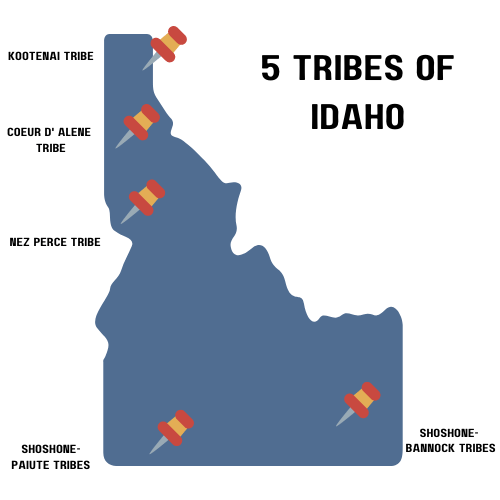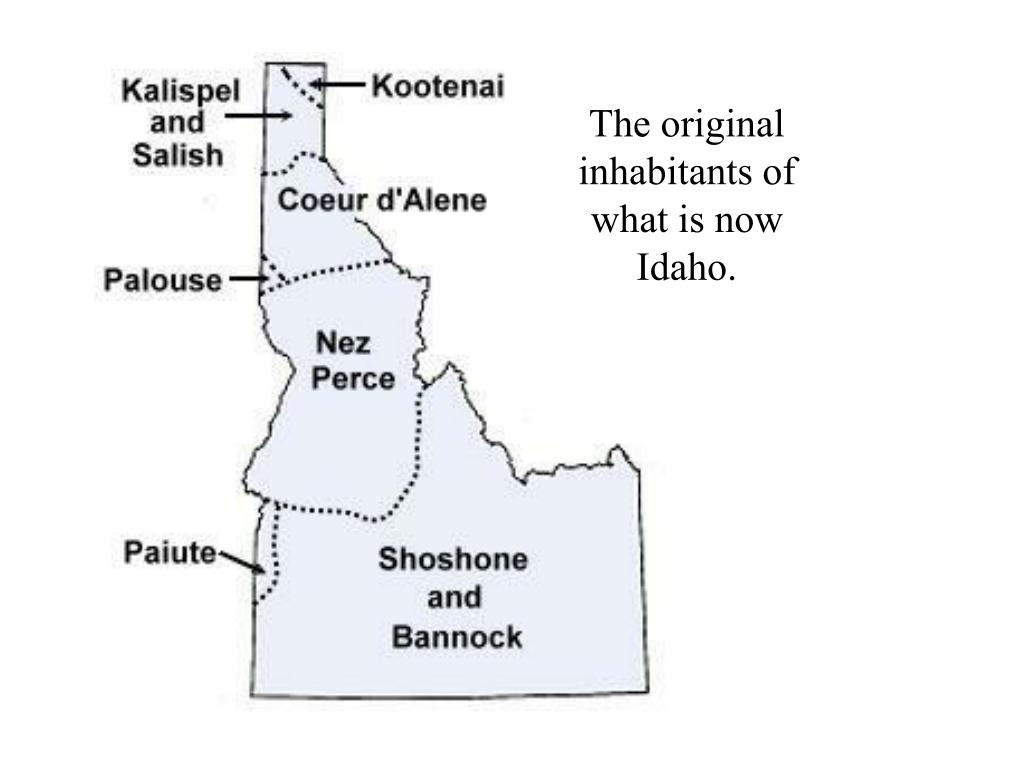
Guardians of the Gem State: The Resilient Native American Tribes of Idaho
Idaho, often celebrated for its rugged mountains, pristine rivers, and vast wilderness, holds a deeper, more ancient story within its landscapes. Long before prospectors sought gold or settlers carved out homesteads, this land was, and remains, the ancestral home of diverse and resilient Native American nations. From the powerful Nez Perce and Shoshone-Bannock to the resourceful Coeur d’Alene and the steadfast Kootenai, these tribes have shaped Idaho’s history, culture, and very identity, often against incredible odds.
Their narrative is one of profound connection to the land, devastating loss, unyielding resilience, and a continuous fight for sovereignty and cultural preservation. Understanding Idaho means understanding its First Peoples – their past, their present, and their vital role in the state’s future.

A Tapestry of Ancient Cultures
Thousands of years before European contact, Idaho was a vibrant mosaic of indigenous societies, each adapted to its specific environment. The Nez Perce (Nimiipuu) controlled vast territories spanning central Idaho, eastern Oregon, and southeastern Washington, renowned for their sophisticated horsemanship, salmon fishing, and intricate trade networks. Their name, given by French trappers, means "pierced nose," though few actually practiced the custom.
To the south, the Shoshone and Bannock peoples roamed the expansive plains and mountains, following bison herds, hunting game, and gathering roots and berries. The Shoshone, particularly known for their resilience and intimate knowledge of the land, were the people of Sacajawea, the invaluable guide for the Lewis and Clark expedition. The Bannock, closely allied with the Shoshone, were skilled buffalo hunters and warriors.
In the northern panhandle, the Coeur d’Alene (Schitsu’umsh) lived along the shores of their namesake lake, thriving on its abundant fish and game. They were known for their strong spiritual beliefs, communal living, and fierce independence. Further north, the Kootenai (Ktunaxa) inhabited the extreme northern reaches of Idaho, Montana, and British Columbia, distinct in their language and culture, known for their unique Sturgeon-nosed canoes and deep spiritual connection to the Kootenai River.
These diverse nations were not isolated; they engaged in complex systems of trade, diplomacy, and occasional conflict, their lives intimately interwoven with the rhythms of the seasons and the bounty of the land.
The Tide of Change: Treaties, Loss, and Assimilation
The 19th century brought an irreversible tide of change. Explorers, fur traders, missionaries, and eventually, a flood of American settlers, encroached upon ancestral lands. The federal government, driven by "Manifest Destiny," began a systematic process of land acquisition through treaties, often signed under duress, misunderstood, or outright violated.
The Nez Perce, initially welcoming to early American explorers, found their vast territories shrinking with each successive treaty. The Walla Walla Council of 1855, where Chief Lawyer signed away significant lands, and the subsequent Treaty of 1863, which dramatically reduced their reservation to a fraction of its original size, led to bitter divisions. The latter, signed by a minority of chiefs, was rejected by Chief Joseph and his band, ultimately leading to the tragic Nez Perce War of 1877. Chief Joseph’s poignant surrender speech – "I am tired of fighting. Our chiefs are killed… From where the sun now stands, I will fight no more forever" – remains a powerful testament to the heartbreak of forced removal and the futility of resistance against overwhelming force.

Similarly, the Shoshone-Bannock tribes saw their traditional hunting grounds diminish. The Fort Bridger Treaty of 1868 established the Fort Hall Reservation, but even within its boundaries, the tribes faced immense pressure from settlers, conflicts over resources, and the devastating impact of the vanishing buffalo herds.
Beyond land loss, the federal government pursued policies of forced assimilation. The Dawes Act of 1887 broke up communal tribal lands into individual allotments, aiming to destroy tribal structures and encourage farming. Children were forcibly removed from their families and sent to boarding schools, where they were forbidden to speak their native languages, practice their traditions, or wear their traditional clothing. This era inflicted deep intergenerational trauma, the scars of which are still felt today.
The Resilient Present: Four Federally Recognized Tribes
Despite the immense pressures and historical injustices, Idaho’s Native American tribes have not only survived but thrived, rebuilding their communities and asserting their inherent sovereignty. Today, four federally recognized tribes call Idaho home:
1. The Shoshone-Bannock Tribes of Fort Hall
Located in southeastern Idaho, the Fort Hall Reservation is home to the Shoshone-Bannock Tribes, a confederation of Northern Shoshone and Bannock peoples. Their reservation spans over 544,000 acres, encompassing diverse landscapes from high desert to fertile river valleys. The tribes have worked tirelessly to revitalize their cultures, languages (Shoshone and Bannock), and traditional practices. They are a significant economic force in the region, operating the Shoshone-Bannock Hotel & Casino, several agricultural enterprises, and managing natural resources. Their deep connection to the land and its resources, particularly the buffalo and salmon, remains central to their identity. The tribes actively manage a bison herd, a powerful symbol of their heritage and a source of cultural pride.
2. The Nez Perce Tribe
Headquartered in Lapwai, the Nez Perce Tribe’s reservation is situated in north-central Idaho, though their aboriginal lands extended far beyond its current boundaries. The tribe has been at the forefront of cultural and environmental preservation efforts. They have a robust language immersion program to revitalize Nimiipuu, and their cultural events, like the annual Pi-Nee-Waus Community Celebration and Pow Wow, draw visitors from across the country. The Nez Perce are also leading the charge in salmon recovery efforts, working to restore fish runs that are vital to their culture and sustenance. Their legal battles over treaty-guaranteed fishing rights have set precedents for tribal sovereignty nationwide.
3. The Coeur d’Alene Tribe
Located in northern Idaho, the Coeur d’Alene Tribe’s reservation encompasses a significant portion of Lake Coeur d’Alene and surrounding lands. The tribe has achieved remarkable economic success, primarily through their gaming operations at the Coeur d’Alene Casino Resort Hotel and the acclaimed Circling Raven Golf Course. This economic stability has allowed them to invest heavily in tribal services, healthcare, education, and cultural programs. The Coeur d’Alene Tribe is also a fierce advocate for environmental protection, particularly concerning the water quality of Lake Coeur d’Alene, which has been impacted by historical mining pollution. Their efforts to reclaim and manage their ancestral lands and waters reflect their deep spiritual connection to their homeland.
4. The Kootenai Tribe of Idaho
The smallest of Idaho’s federally recognized tribes, the Kootenai Tribe of Idaho resides on a small reservation near Bonners Ferry in the northernmost part of the state. Despite their small numbers, the Kootenai have a powerful history of self-determination. In 1974, frustrated by federal inaction, the tribe famously "declared war" on the United States and charged a toll on a highway crossing their land, a dramatic act that garnered national attention and ultimately led to federal recognition and land acquisition. Today, the Kootenai operate the Kootenai River Inn Casino & Spa, which provides vital economic support for their community and allows them to maintain their cultural practices and language.
Challenges and Triumphs: Sovereignty and Self-Determination
The journey for Idaho’s Native American tribes is far from over. They continue to navigate complex relationships with federal, state, and local governments, asserting their inherent sovereignty – the right to self-governance. This includes operating their own justice systems, developing their own laws, and managing their own resources.
Economic development, often spearheaded by gaming, has provided a crucial revenue stream, allowing tribes to build schools, healthcare facilities, and infrastructure that were historically denied to them. However, diversification beyond gaming is a continuous goal, with tribes investing in agriculture, forestry, tourism, and technology.
Cultural revitalization is paramount. Language immersion programs are battling the legacy of boarding schools, ensuring that ancient words and stories are passed to new generations. Traditional ceremonies, arts, and crafts are experiencing a resurgence, reinforcing tribal identity and pride. Powwows, open to all, serve as vibrant expressions of culture, bringing communities together in dance, song, and celebration.
Environmental stewardship remains a critical issue. Tribes are at the forefront of protecting water rights, restoring salmon populations, and managing forests and lands in a sustainable manner, drawing on millennia of traditional ecological knowledge. Their legal battles over water and natural resources are not just about economic survival but about preserving their way of life and spiritual connection to the land.
Looking to the Future
The narrative of Idaho’s Native American tribes is not one of a bygone era, but of a dynamic and evolving present. They are modern nations, blending ancient traditions with contemporary challenges and opportunities. Their resilience, born from centuries of adaptation and struggle, serves as an enduring testament to the strength of the human spirit.
As Idaho continues to grow and change, the voices of its First Peoples become increasingly important. Their perspectives on land use, environmental policy, economic development, and social justice offer invaluable insights. Recognizing and respecting their sovereignty, celebrating their rich cultures, and acknowledging their profound contributions are essential steps toward a more equitable and informed future for the Gem State. The tribes of Idaho stand as living proof that even after immense hardship, culture endures, sovereignty prevails, and the spirit of a people remains deeply rooted in their ancestral lands.


